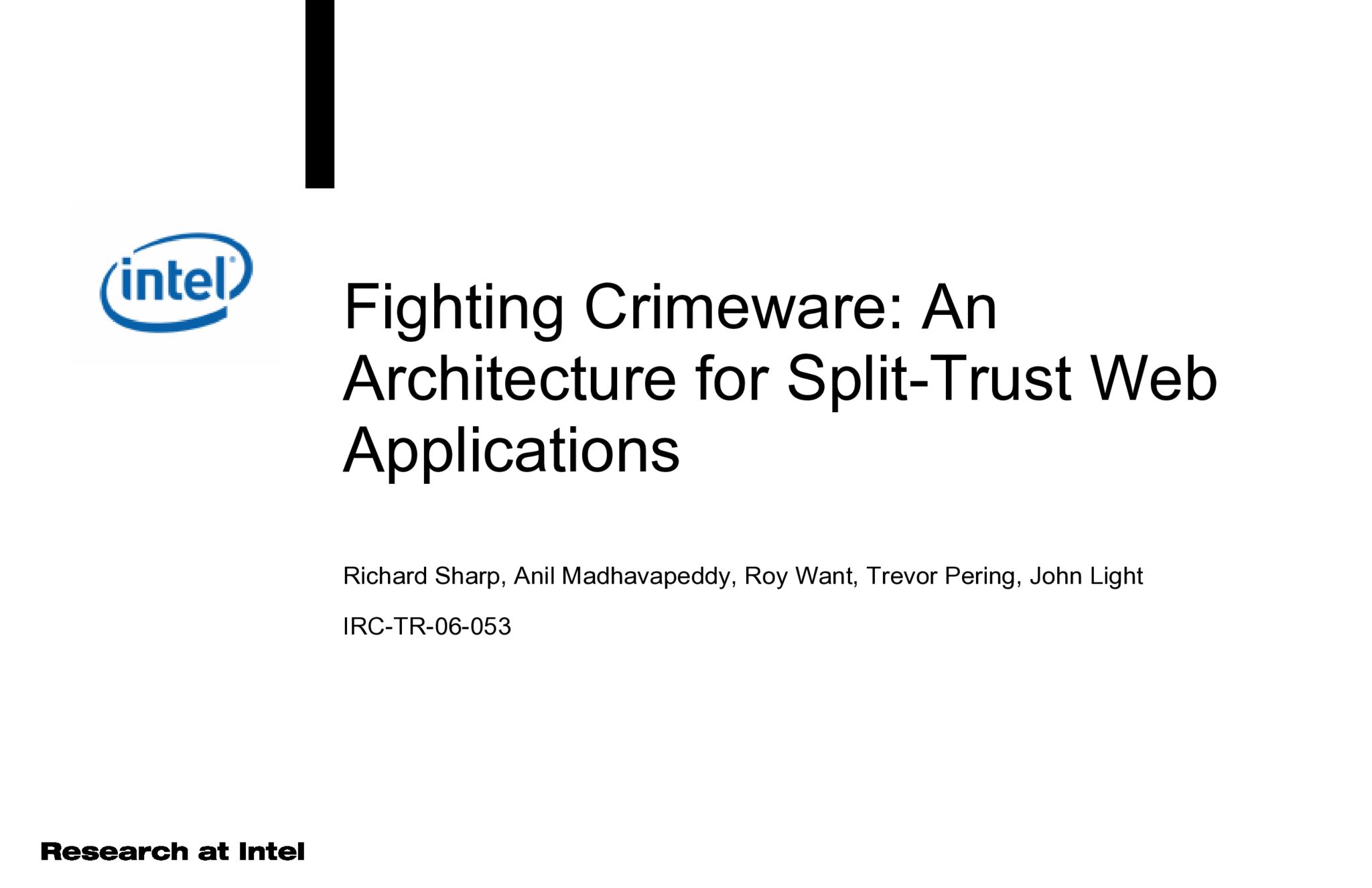Fighting Crimeware: An Architecture for Split-Trust Web Applications
Richard Sharp, Anil Madhavapeddy, , , and John Light.
Technical report (IRC-TR-06-053) at Intel Research.
We present an architecture for split-trust browsing: a technique that enables web applications to split their HTML across a pair of browsers—one untrusted browser running on a PC and one trusted browser running on a user’s personal device. Information entered via the personal device’s keypad cannot be read by the PC, thwarting PC-based keyloggers. Similarly, information displayed on the personal device's screen is also hidden from the PC, preserving the confidentiality and integrity of security-critical data even in the presence of screengrabbing attacks and compromised PC browsers. We present a Security Policy Model for split-trust web applications that affords defence against a range of crimeware-based attacks, including those based on active-injection (e.g. inserting malicious packets into the network or spoofing user-input events). Performance results of a prototype split-trust implementation are presented, using a commercially available cell phone as a trusted personal device.
